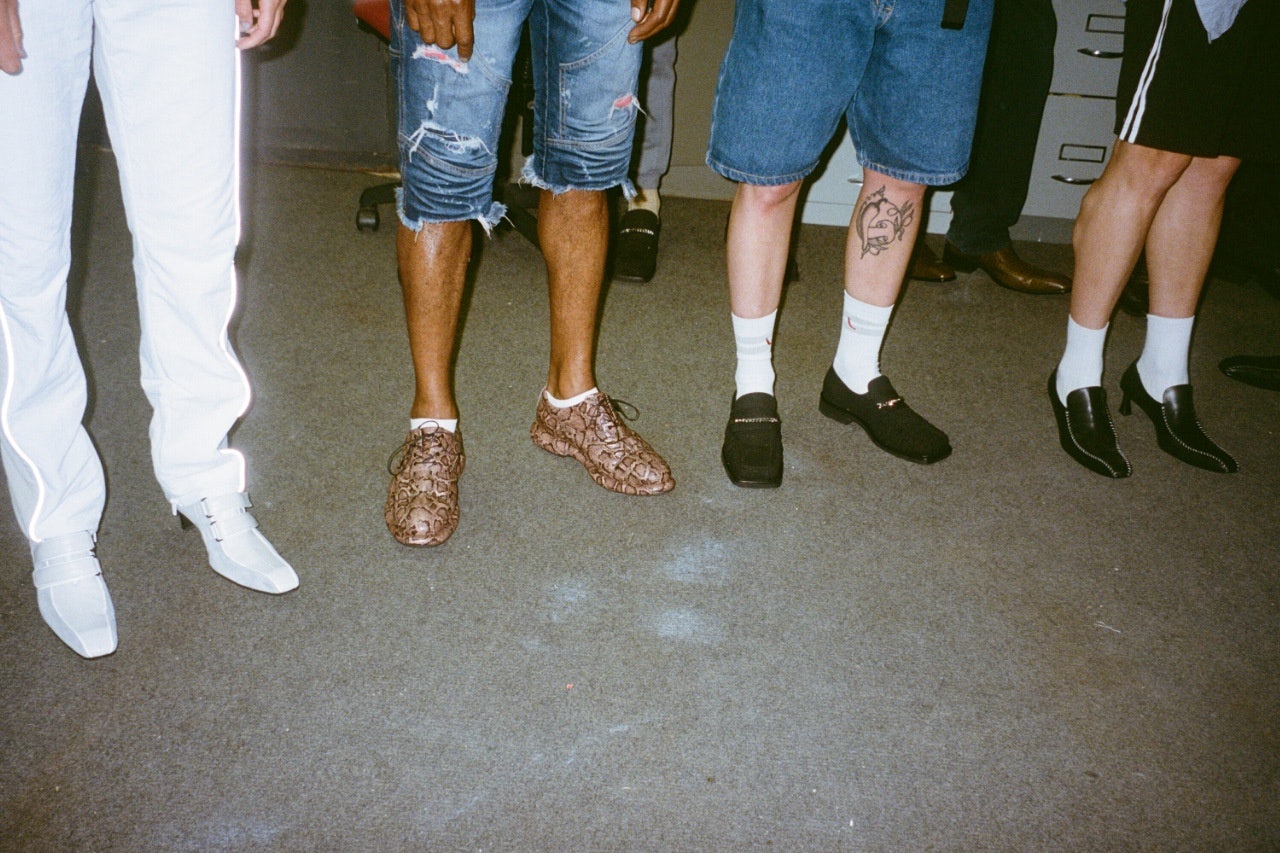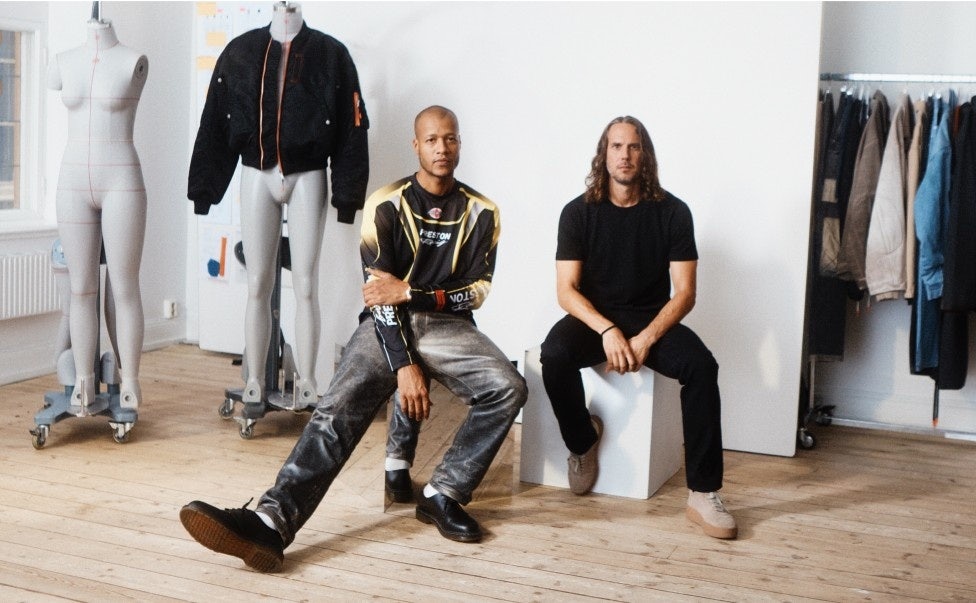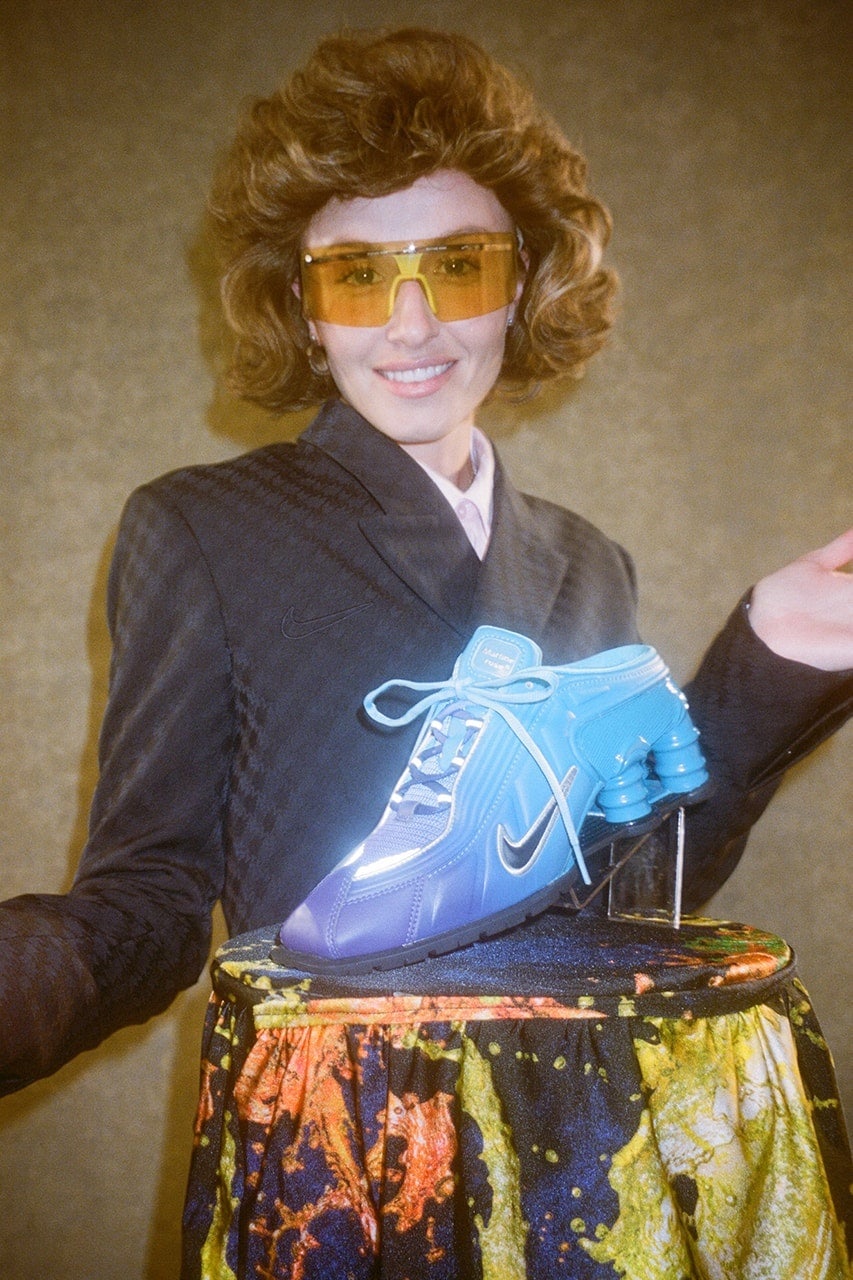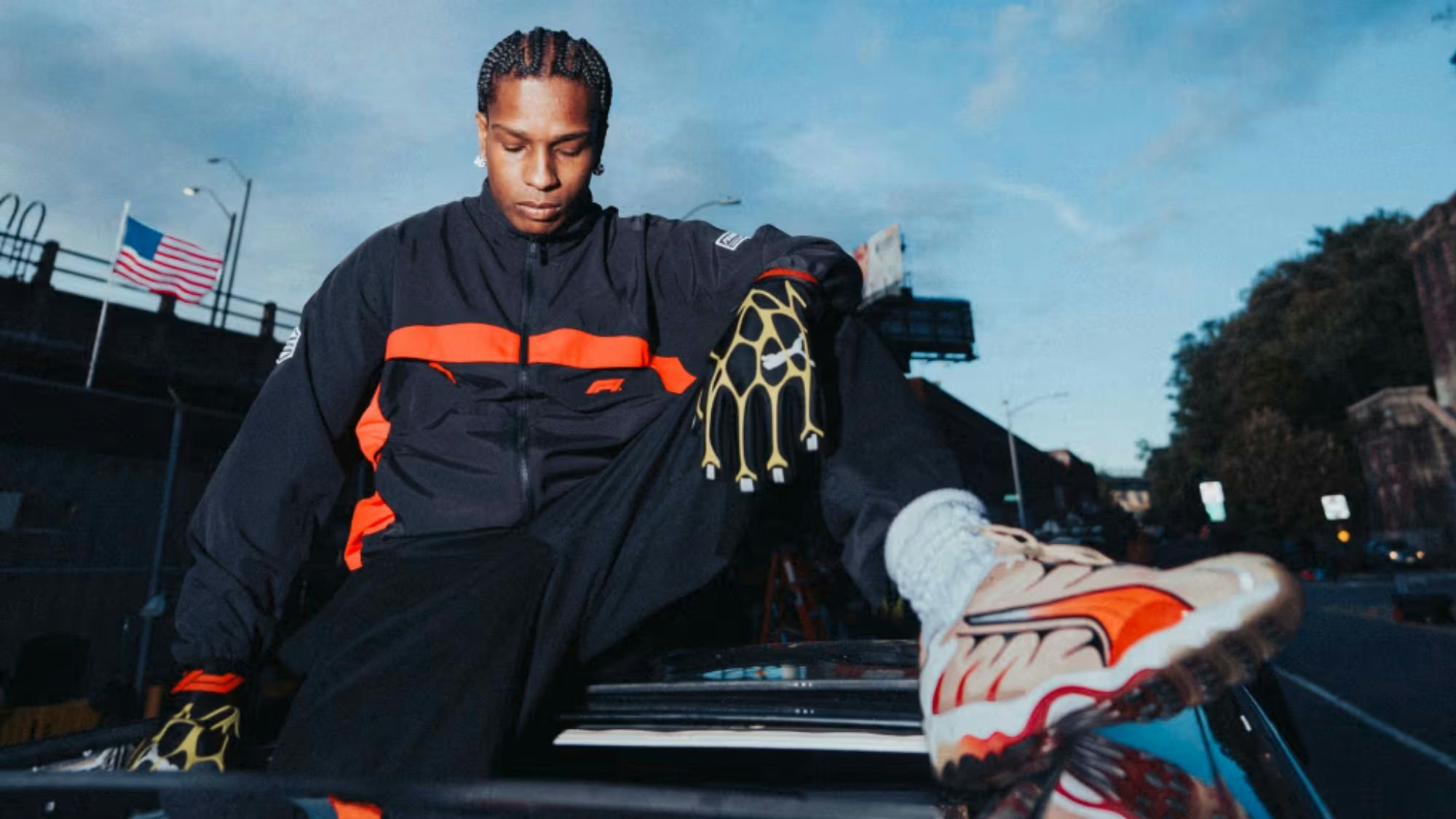Independent designers and fashion houses have been the wholehearted inspiration for high-street clothing rails ever since their inception. But it is only recently that fast-fashion’s imitation of luxury has so blatantly extended beyond design, into business models.
This year, designers have stepped into creative director roles at some of the world’s largest lower-end brands. May saw cult London-based menswear designer Martine Rose appointed as British shoe manufacturer Clarks’ first-ever guest creative director. She launched iterations of the brand’s classic Oxford, women's loafer, and sandal at her Spring 2024 show in June.

Then in September, fast fashion retailer Hamp;M announced a long-term partnership with American designer Heron Preston as creative menswear advisor. He will pioneer the company’s new “H2 platform” dedicated to limited edition collections, advise Hamp;M teams, mentor young talent, and implement circular innovation programs. Meanwhile, Puma last month went viral, in China and the rest of the world, when it announced globally renowned music artist AAP Rocky as the new creative director of the Puma x F1 partnership.

“As [fast fashion businesses] react to the shifting socio-economic landscape, evolving discourse, and complex attitudes driving consumption, they are continually looking across the fashion industry and beyond to determine what’s trending, and predict what’s next,” editor and brand strategist Steve Salter tells Jing Daily. “Today, this isn’t isolated to what’s shown on the catwalk, but everything down to how the collections are made, marketed, released, and positioned.”
High-low collaboration was the springboard#
Ever since Karl Lagerfeld’s 2004 collection for Hamp;M, a plethora of designers have been busy creating collections for high-street brands. “In an instant, as the boundaries between luxury and mass were blurred and the line practically sold out globally in a day, design was somewhat democratized and the industry woke up to this new dawn of collaborations, drops and pop-up concepts,” says Salter.
That disruptive 2004 high-low collision showed that it was acceptable for luxury labels to associate themselves with the high street — it’s the reason that this year saw former creative director of Givenchy and Chloé Clare Waight Keller return to fashion with a Uniqlo line, Mugler co-design a Hamp;M collection, and Chinese designer Calvin Luo work with Zara.
The list of designer-high street collaborations has reached a frequency that’s difficult to track. And that rate of constant merging has left independent designers feeling less segregated from fast fashion brands, so much so that they are happy to be named creative directors in 2023.
One major attraction for designers is the huge exposure that the high-street provides. Independent designers find that level of global reach irresistible.
Heron Preston, for one, could do with a boost from Hamp;M. After showing at Paris Fashion Week from 2017, the brand moved online during Covid-19 lockdowns, then never managed to make a return to the schedule, only debuting in New York this year.
As a friend and collaborator of Virgil Abloh's, when the late creative director founded Off-White, Preston's eponymous brand was also brought to the New Guards Group. But unfortunately, in the face of streetwear’s increasingly competitive nature, Heron Preston’s namesake brand no longer holds the same popularity as the creative himself.
For context, as of August 2023, Hamp;M has 3,875 stores in 77 markets, with 60 online markets. Whereas, the internet suggests that Heron Preston has under 100 stockists around the world — a no-brainer deal.
According to Salter, there have been obvious successes from fast fashion x high fashion crossovers, too. He explains one example, “Following the success of U, Lemaire’s collaboration with Uniqlo which started in 2015, Fast Retailing took a minority stake in the Paris-based brand. I’m sure similar relationships will follow when there’s more substance driving the collaborations than just clout and content.”
Brands are entertainers now#
With fashion scrambling to meet the overstimulated needs of netizens, the industry nearing saturation, and the arts merging, “brands are as much entertainment brands as they are fashion brands” in 2023, Salter says.
Whether shopping high- or low-end, consumers increasingly desire to be engaged with, and fast fashion brands appointing famous creative directors is one sure way to attract attention. Fan culture is ultimately shaping the industry. What do Martine Rose, AAP Rocky and Heron Preston all have in common? Cult followings.
Preston has more cultural clout than his brand currently, as he’s been closely associated with Kanye West and Abloh, having worked as an art director for the former’s Yeezy brand. Therefore, through his appointment at Hamp;M, the Scandi-retailer is leveraging the cultural hype surrounding the creative.
Rose, on the other hand, is established in fashion as a cult talent with a loyal community of fans. Recognized as one of the leaders in wide-leg pants, football-inspired style, and for elevating Nike Shox sneakers into something glamorously unique, her name is exactly what Clarks needs to further elevate its reputation in streetwear.
“When the match is considered, fashion designers bring cultural relevance to high street brands. By this, I mean a state when people engage positively with that brand, advocate for it and buy into it,” says Salter. “Cultural relevance engages existing audiences, but most importantly connects with latent audiences and attracts new audiences to drive growth.”

Can fast fashion pivot to luxury?#
Hiring designer creative directors does not distract from the fact that fast-fashion remains notoriously unsustainable. For instance, one of the world’s most polluting retailers, Hamp;M is being sued for alleged greenwashing in the US.
The case centers on the retailer’s Conscious Choice collection, and alleges that its women’s, men’s, kids and baby clothing items are neither sustainable nor environmentally friendly as they are cut from recycled polyester, a disposable plastic considered to be a “one-way street to landfill or incineration.”
“It’s paradoxical to be a relatively independent fashion label, yet be a hyper productive fast fashion brand,” says Sustainability Director at Sleek Magazine Rose Dodd. “If a brand is going to appoint a creative director/advisor with the intention of changing how the brand is perceived in terms of sustainability or its environmental impact, then the creative director/advisor needs to come in and basically only do that, and it should probably be someone who has some sort of history or context in that being important to them”
In fact, according to Australia-founded sustainability rating company Good On You, the Heron Preston brand is rated as “we avoid,” due to its use of very few eco-friendly materials and lack of evidence that it is minimizing textile waste, or reducing its carbon footprint or other greenhouse gas emissions within its supply chain.
Though Preston is not wholly focused on sustainability at Hamp;M, the move could signal a shift in company direction toward slower, more investment-worthy fashion.
On Martine Rose at Clarks, Dodd comments, “It’ll be interesting to see what impact it [the role] has on the name in terms of its position as a brand, whether it will become more luxury or what sort of direction they take in terms of creativity/design. [...] I’m not sure that appointing a creative director or basically rebranding by situating someone with clout in the fashion world (be that a subversive name or a luxury name) will result in any change to the business model in itself.”
Either way, appointing designers to be part of these high-street brands gives credit where it is due to the industry. It is sure an improvement from imitating the designers’ collections. And in terms of gaining relevance, it is working.
As Salter concludes, “The bottom line. It’s all about growth and maximizing business opportunities.”


